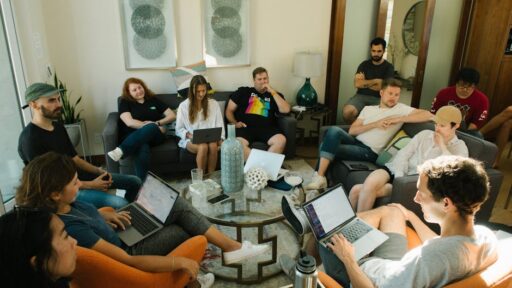How a Swedish AI Coding Startup Scaled to $200M ARR Without Moving to Silicon Valley
In a striking example of how an AI coding startup can scale rapidly from Europe, a Stockholm-based company recently doubled its annual recurring revenue (ARR) to $200 million in a four-month window. The company’s leadership credits several strategic choices — staying rooted in Europe, building an in-person engineering culture, and leaning on a highly engaged user community — for driving this accelerated growth.
Why this growth story matters for AI startups
The trajectory of this AI coding startup highlights a shift in how founders think about location, talent and product-market fit. For founders and operators, the implications are practical: you can build category-defining developer tools outside Silicon Valley, and in some cases the advantages of a less overheated local market actually improve execution and focus.
Key takeaways for founders
- Retain strategic control by building where you can attract committed talent, not just where you are advised to relocate.
- Leverage community feedback loops to iterate faster on core features and product-market fit.
- Prioritize in-person collaboration for complex product problems while hiring globally for depth.
How did the company double ARR so quickly?
This question is central for teams trying to replicate rapid scale. The answer combines product, people and distribution:
- Product-market fit and differentiated UX: The startup focused on a distinct vibe-coding experience for developers — a mix of AI-assisted completion, workflow templates and integrations that reduce friction for common coding tasks.
- Community-driven innovation: An active user community contributed feature requests, early testing and bug reports. That constant stream of real-world feedback compressed the product iteration cycle.
- Talent strategy: Instead of relocating the whole team to the U.S., leadership recruited experienced engineers and product leaders from top Silicon Valley companies to join an in-person hub in Stockholm. That blend brought institutional know-how without surrendering the company’s European base.
- Go-to-market focus: The team aligned sales, developer advocacy and product to prioritize high-value enterprise use cases while maintaining a strong freemium funnel for individual developers.
Community as the growth engine
One of the most consistent patterns in rapid SaaS growth is an active, opinionated user base. In this case, the company’s community channels — including lively Discord conversations and contributor-led resources — acted as an ongoing R&D lab. Users debugged workflows, debated integrations and surfaced feature improvements that the product team could prioritize with confidence.
Why staying in Europe was a deliberate advantage
Founders are often told to move to Silicon Valley to scale. This company resisted that pressure and argues the decision delivered multiple advantages:
Lower intensity, higher focus
European AI markets are sometimes less frenzied than Silicon Valley’s, which can reduce distraction and speculation. For this team, slower local pace meant fewer strategic detours and more execution. The company framed that as a benefit: investing in product quality and deep integration with developer workflows rather than chasing headline-driven growth.
Access to mission-driven talent
While the talent pool in Europe has grown, attracting senior hires still requires a compelling mission and strong culture. The startup successfully convinced leaders leaving major tech firms to join an in-person Stockholm hub, combining local roots with international experience.
How does funding amplify — and complicate — fast ARR growth?
Rapid revenue gains often attract sizable venture capital interest. The company has raised significant funding since launch, enabling faster hiring, product investment and sales expansion. But funding also raises expectations: cash accelerates growth but requires disciplined capital allocation and a clear path to sustainable margins.
Founders should balance three priorities when venture funding ramps up alongside ARR:
- Preserve product velocity by protecting engineering priorities from short-term sales pressures.
- Maintain unit economics discipline to ensure ARR growth is high-quality and repeatable.
- Use centralized metrics (ARR growth rate, net revenue retention, payback period) to guide investments in customer acquisition and product expansion.
What strategies should other AI coding startups adopt?
Not every startup will replicate a 4-month doubling of ARR, but several strategies are broadly transferable:
- Build visible, developer-focused channels (Discord, GitHub, community forums) and treat community feedback as a product priority.
- Design onboarding flows that demonstrate the AI assistant’s value within the first 10–20 minutes of use.
- Invest in regional hubs where in-person collaboration accelerates complex technical work while recruiting globally for specialized skills.
- Align customer success and product to drive expansion revenue inside existing accounts.
What are the risks and how to mitigate them?
Fast growth introduces operational and market risks. Key mitigations include:
Operational scale risks
- Run scalable engineering practices (CI/CD, observability, robust testing) to avoid regressions as the codebase expands.
- Build a customer success motion early to prevent churn as you add higher-ticket enterprise customers.
Market and competitive risks
Competitive dynamics in AI-assistant tooling move quickly. To stay defensible, teams should emphasize:
- Specialized integrations that are sticky for developer workflows.
- Unique data signals from community interactions and user telemetry that competitors can’t easily replicate.
How does this story fit into broader AI startup trends?
This growth example echoes wider themes in the AI ecosystem: rapid monetization of developer productivity tools, the leverage of community-led development, and debates about where AI companies should locate their operations. For further context on startup scaling and ARR narratives, see our earlier coverage of SaaS growth dynamics in AI: OpenAI Startups Growth: Scaling to $200M ARR Faster and discussions about infrastructure risk in AI: Is an AI Infrastructure Bubble Brewing? Data Center Risks.
What should investors watch for next?
Investors evaluating fast-growing AI coding startups should focus on:
- Net revenue retention — do customers expand organically?
- Customer concentration — is ARR diversified across many accounts?
- Product defensibility — does the company own unique integrations, workflows or community data?
Investors must also weigh capital deployment: whether to prioritize margin improvement, global expansion, or deeper product R&D.
FAQ: Can you build a global AI company from Europe?
Short answer: Yes — if you combine world-class talent, a clear go-to-market motion, and a community that accelerates product development.
Why it works:
- European hubs increasingly supply technical talent and leadership experience.
- Local markets can offer stability and focus during early product refinement.
- Remote and hybrid hiring models let companies access specialists globally while maintaining a strong center for culture.
Actionable checklist for founders inspired by this case
- Prioritize an early, active community channel and measure engagement metrics.
- Design onboarding that proves value in minutes, not days.
- Hire a small in-person nucleus for cross-functional work and recruit senior hires with proven domain expertise.
- Track unit economics and expansion ARR to ensure growth is profitable and repeatable.
- Invest in integrations that lock in developer workflows and surface unique telemetry.
Further reading and context
To understand how ARR milestones fit into the wider AI startup landscape and funding cycles, check out our analysis on long-term strategies for AI companies and how infrastructure decisions shape scale: The Future of AI: Beyond Scaling Large Language Models.
Conclusion
The Swedish startup’s leap to $200M ARR underscores that high-velocity growth is possible outside the traditional Silicon Valley route. By combining a tight product loop, engaged community, and a strategic talent base, AI coding startups can scale rapidly while preserving culture and control. For founders and investors, the lesson is clear: carefully chosen location strategy, community-first product work, and disciplined capital allocation are replicable levers for building global AI companies.
Call to action
Want more in-depth analysis on scaling AI developer tools and SaaS ARR strategies? Subscribe to Artificial Intel News for weekly breakdowns, or read our detailed feature on ARR scaling to get practical frameworks you can apply today.






